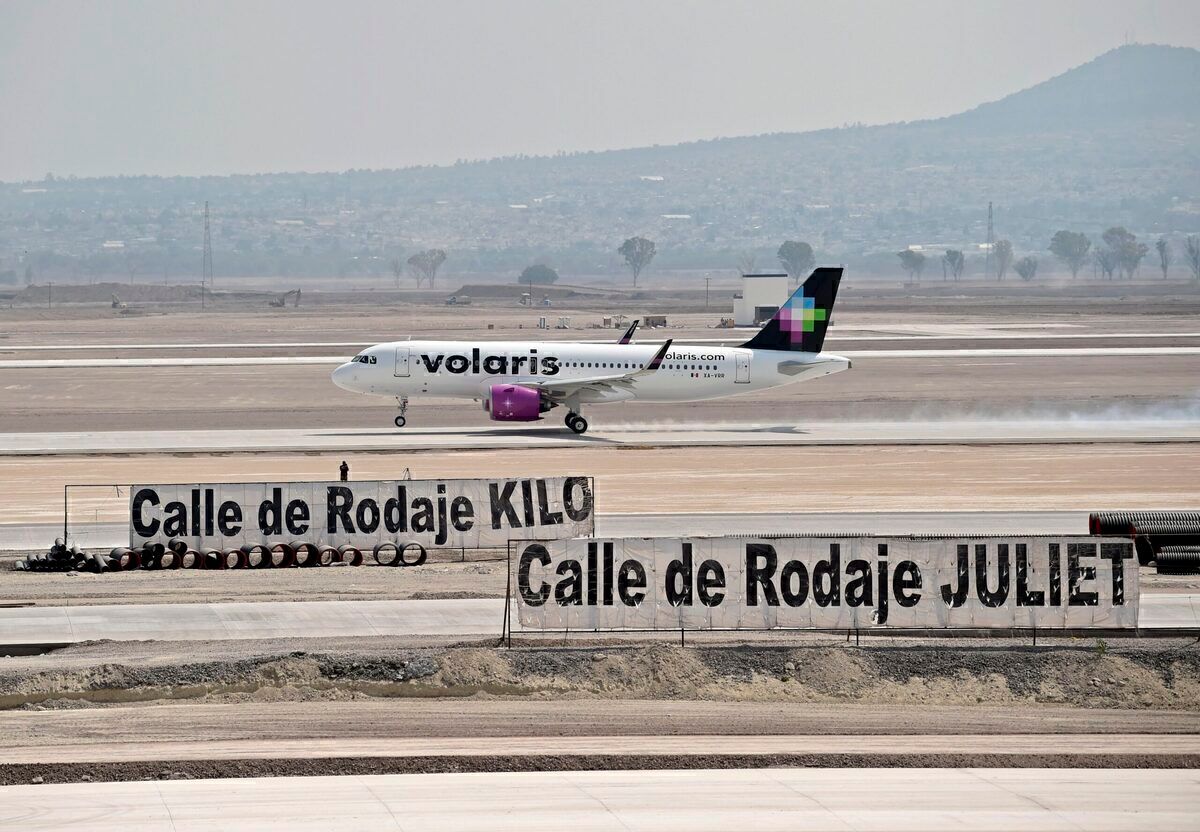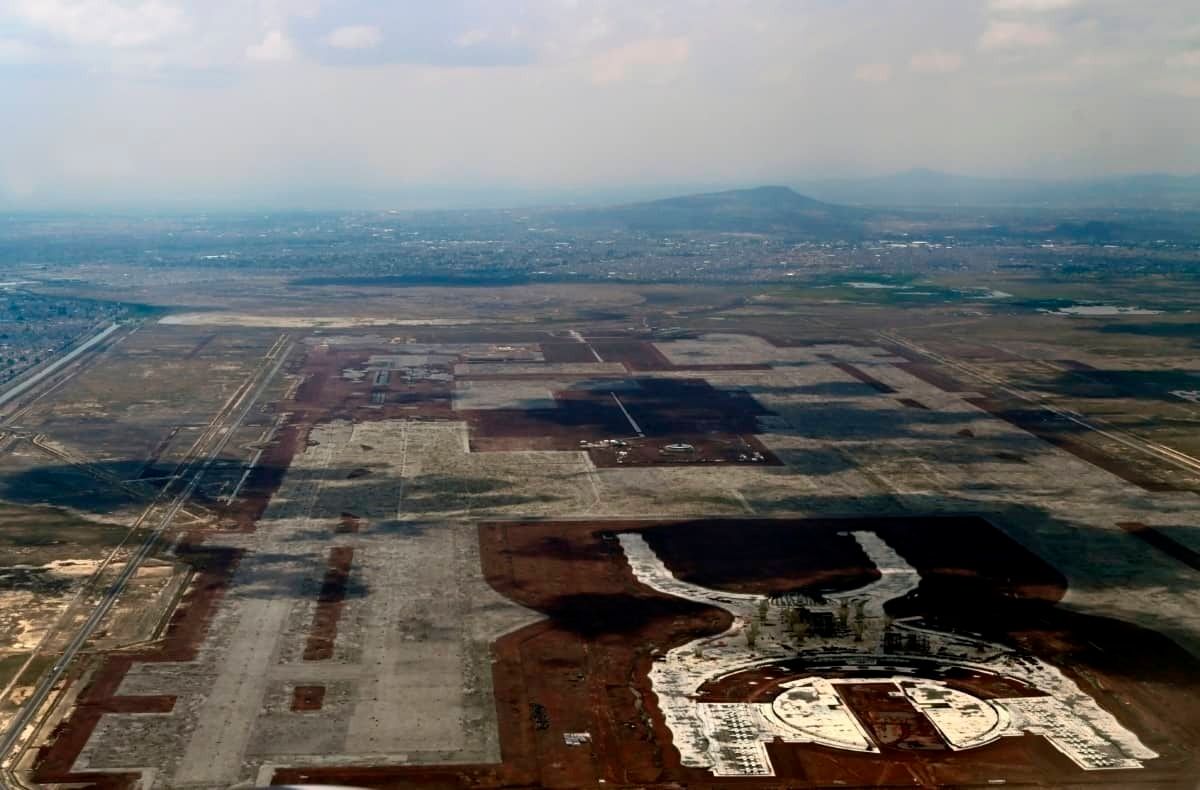The Mexican Government is building a new commercial-military airport in the Military Base of Santa Lucía, outside of Mexico City. This new hub will operate simultaneously with Mexico City Airport (AICM) and Toluca International Airport (AIT) once it is inaugurated on March 21, 2022. How many passengers will it receive? Will it work, or will it be a white elephant? Let’s investigate further.
Santa Lucía’s military origins vs. Texcoco Airport
The current airport of Santa Lucía is one of the main military bases for the Mexican army. Located outside of Mexico City, it has served since 1952.
Santa Lucía has always worked simultaneously with Mexico City International Airport, but only because the military base workload is not strong enough to hurt the main Mexican airport’s commercial operations.
Since 2013, Mexico City Airport has reached saturation point. In 2019, it served 52 million passengers. To cope with the incoming demand, the former Mexican Government under Enrique Peña Nieto planned to build a new airport and close the AICM.
This new airport was going to be built outside of Mexico City, in the Texcoco lake basin. The Texcoco Airport’s geographical location raised architectural questions, but the project had the support of many international entities.
Texcoco airport was going to serve Mexico for the next five decades with a maximum capacity of 130 million passengers, six runways, and two terminals. That project, though, was scrapped.
Andrés Manuel López Obrador, the current Mexican president, canceled the construction of Texcoco Airport. Instead, he proposed a metropolitan system of airports: AICM, AIT, and Santa Lucía. In the long run, these three airports will handle up to 125 million passengers per year.
Stay informed: Sign up for our daily aviation news digest.
Where are we now?
The construction of the Santa Lucía International Airport is on the clock. It is set to open up in March 2022. The Mexican military army is building it. The whole project will cost more than 82 billion pesos (US$3.9 billion), as reported by Forbes. Plus, there’s also the cost of canceling the Texcoco Airport.
As of February 14, 2021, the Santa Lucía Airport had 50% of completion. The Mexican military recently posted a video showing satellite images of the construction.
Earlier this month, López Obrador visited Santa Lucía Airport during the Mexican Military Air Force national day’s celebrations. During this event, the Government inaugurated the first part of the new airport.
Four Mexican carriers held test landings on one of the runways: Volaris, Viva Aerobus, Aeromar, and Transportes Aéreos Regionales. Interestingly enough, Aeroméxico didn’t participate in the event.
Nevertheless, since Santa Lucía still doesn’t have a Control Tower, the air controllers at AICM directed the traffic during the event. They closed the airspace at the AICM while the four airlines were doing land tests at Santa Lucía.
Will the three airports work simultaneously?
The most significant doubt is whether the three airports will work correctly when operating simultaneously. The Government has said that they will use the latest technology for air control traffic to enable joint operations.
Plus, the Mexican authorities have pointed out the simultaneous operations in other cities like New York, Los Angeles, and London. Nevertheless, Mexico City has a different geography and meteorology, as pointed out by many international entities, like MITRE.
Currently, there’s no evidence that the three airports will be able to work simultaneously. There’s also no evidence that they won’t work. But, when building an airport, many studies have to prove the scientific reasonability of said airport. For Santa Lucía, there aren’t any.
In 2018, NAVBLUE conducted a pre-study assessing the technical feasibility of simultaneous operations of AICM and Santa Lucia. The European firm concluded that it is technically feasible to do it, but, in order to reach a maximum level of safety and efficiency, Mexico would have to heavily change its airspace structure and retrain completely its Air Traffic Controllers. NAVBLUE wrote the following,
"It is important to highlight that the pre-study conclusion (...) is derived from numerous assumptions and subjected to several uncertainties in terms of input data and local regulations. In addition, it has not been tackled a formal obstacle assessment."
In the end, there are doubts regarding the future operation of the three airports in Mexico City. Santa Lucía is hoping to avoid the same destiny as Toluca, which has become a white elephant in the last few years.
Plus, the current COVID-19 pandemic has made redundant a new airport for now. It will take years before Mexico City gets to the passenger levels it had in 2019.
Do you think Santa Lucía will work? Let us know in the comments.


